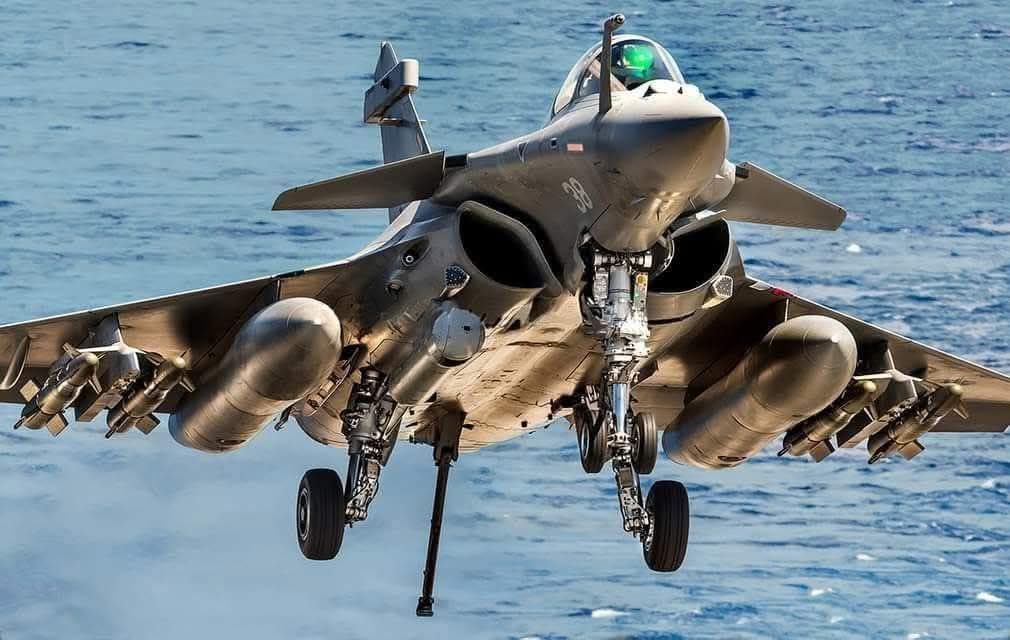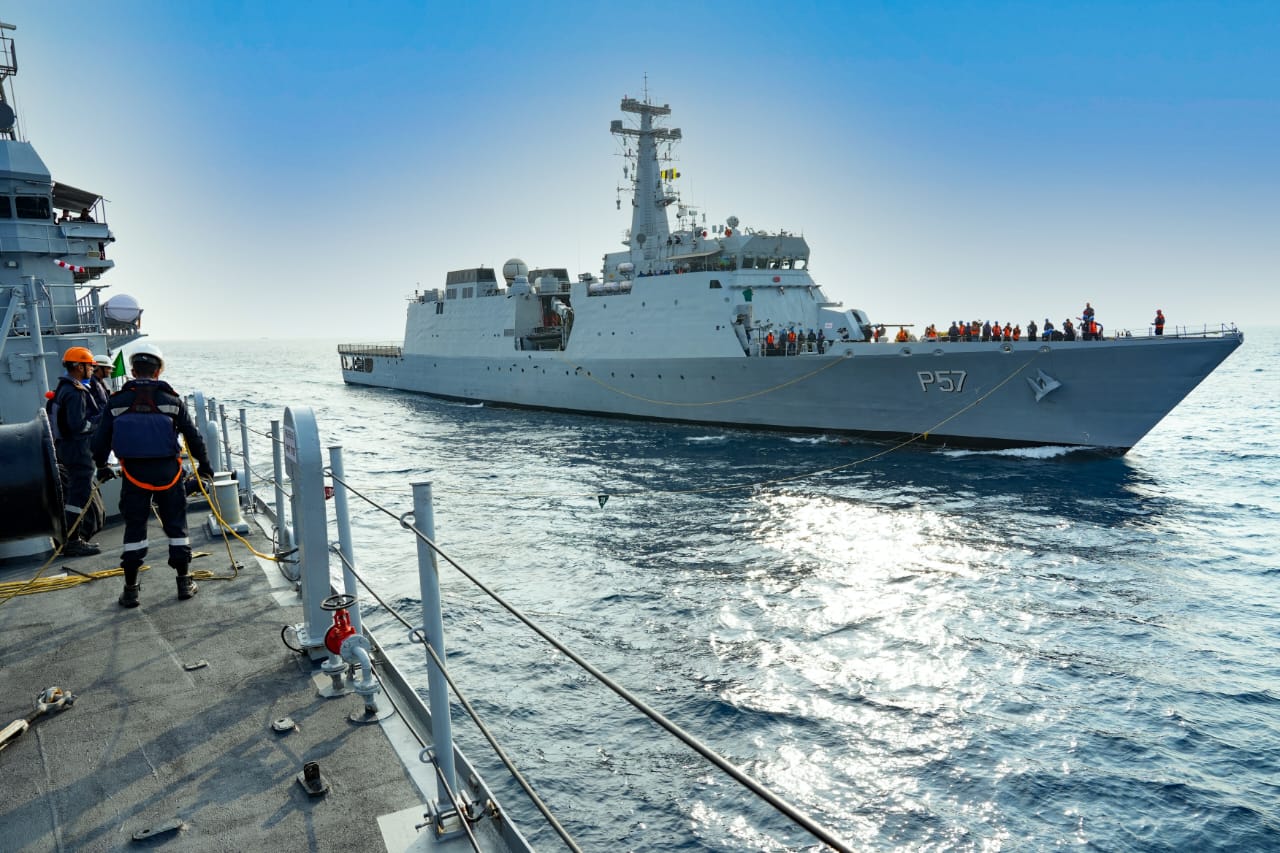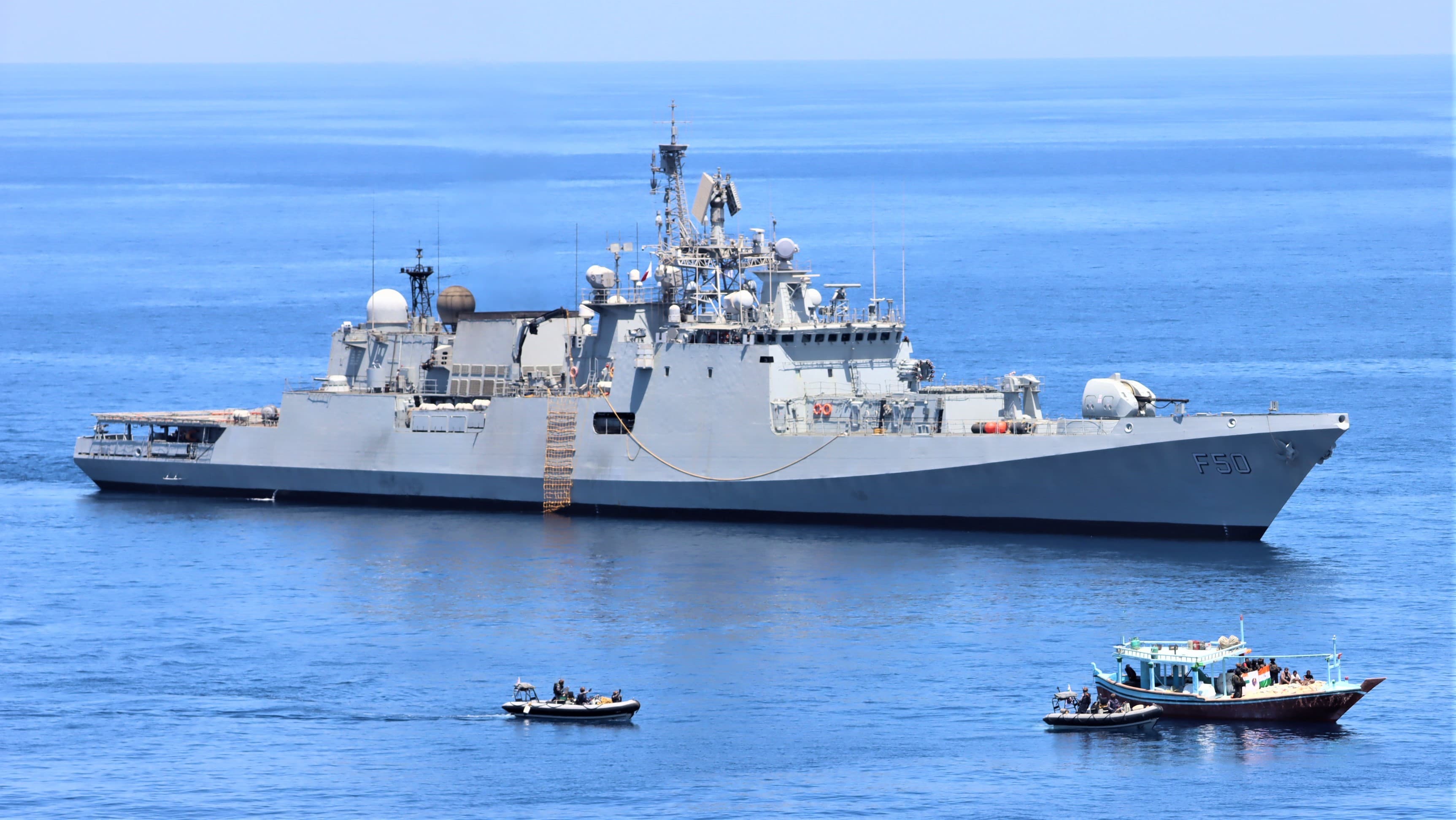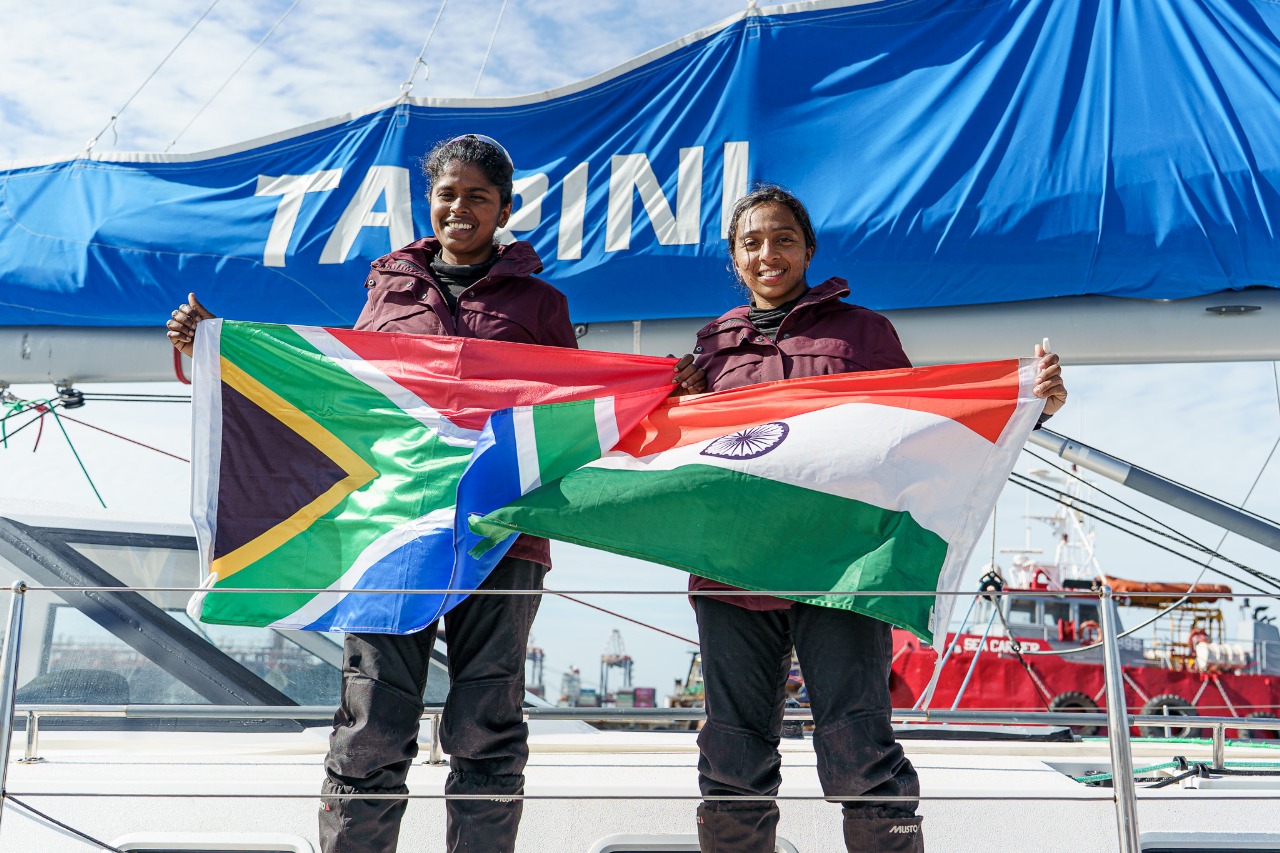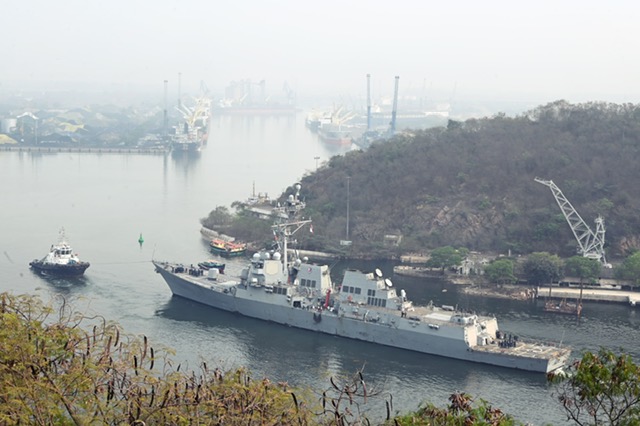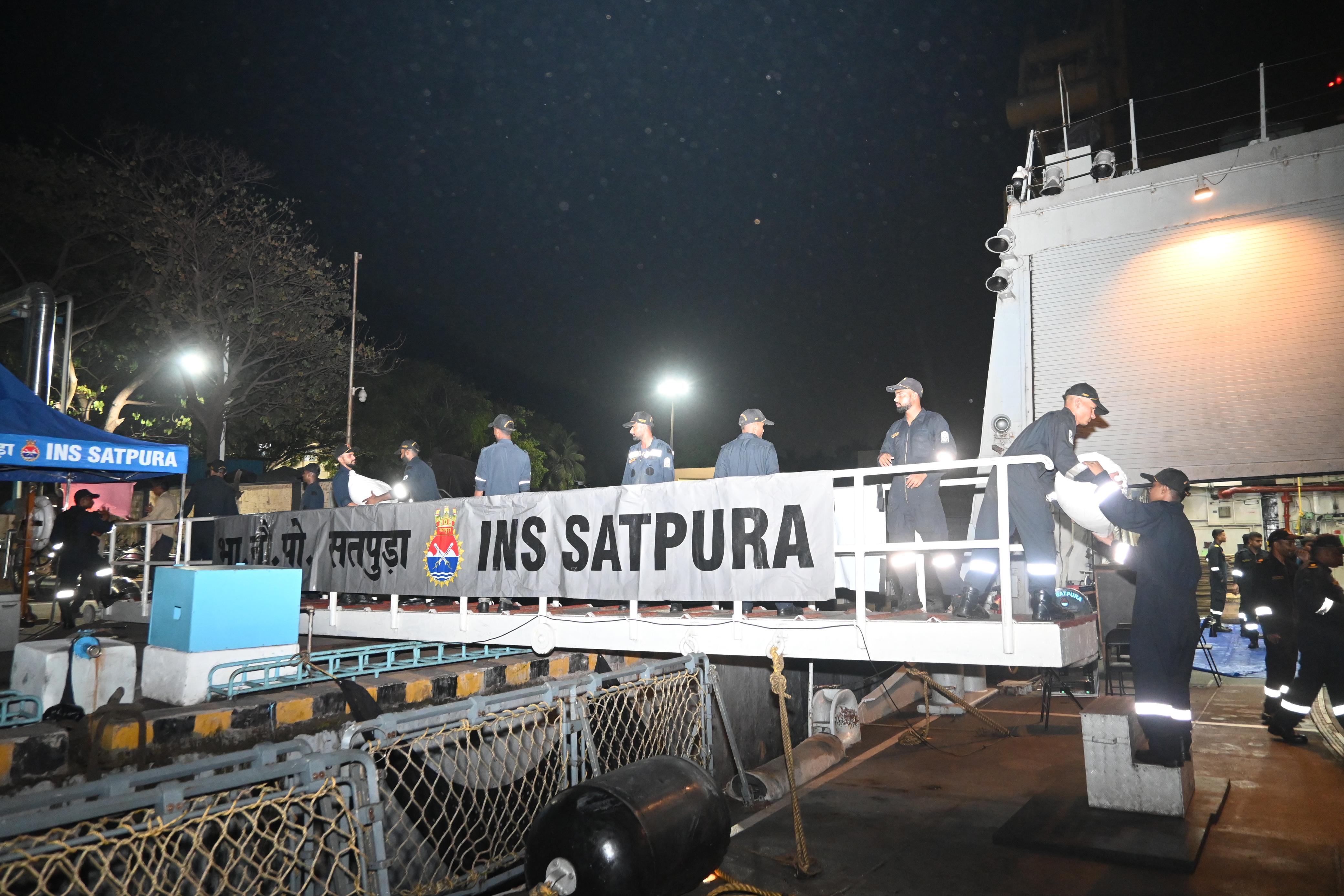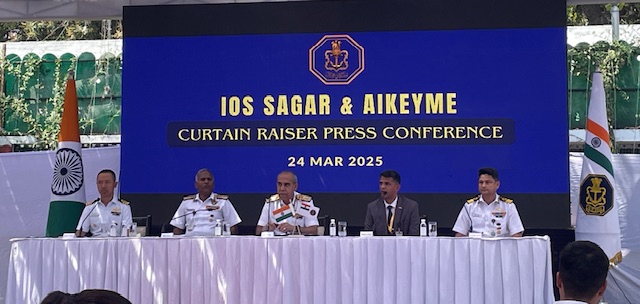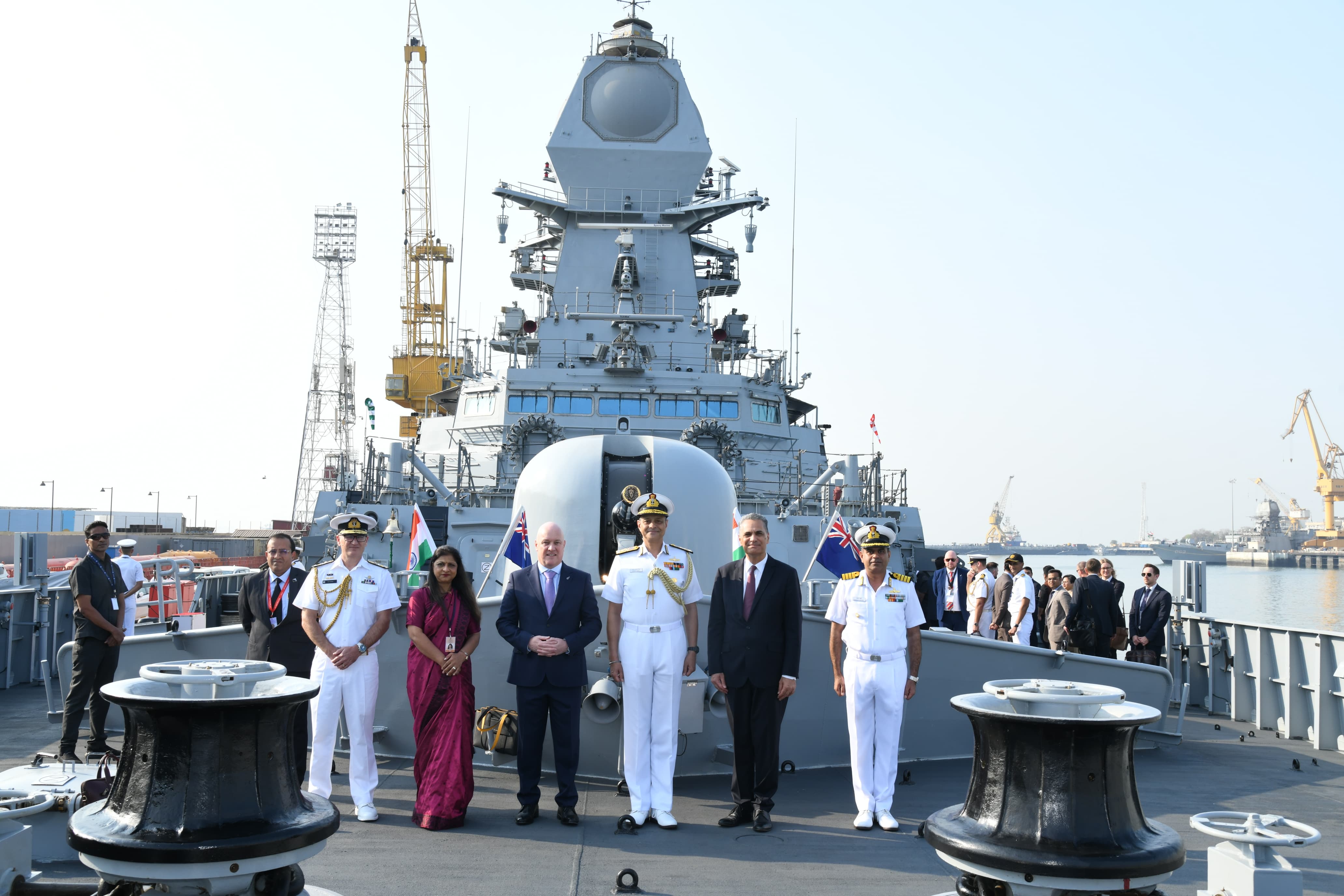 Rajnath Singh (C), along Eknath Shinde (2L), and Admiral R Hari Kumar (2R) posing before INS Imphal during the warship’s commissioning. (Photo: X/@rajnathsingh)
Rajnath Singh (C), along Eknath Shinde (2L), and Admiral R Hari Kumar (2R) posing before INS Imphal during the warship’s commissioning. (Photo: X/@rajnathsingh)
Mumbai: The Indian Navy commissioned its latest warship, INS Imphal, on Tuesday. The defence minister, Rajnath Singh, commissioned the Visakhapatnam-class stealth guided-missile destroyer at the naval dockyard here in the presence of the Maharashtra chief minister, Eknath Shinde, and the Navy chief, Admiral Radhakrishnan Hari Kumar.
This formidable warship marks a significant leap forward in India’s maritime modernization efforts, bolstering its defences and reaffirming its commitment to regional security.
The sleek destroyer, named after the capital of the northeastern state of Manipur, is the largest and most advanced of its kind to bear the name of a city from the region. Its commissioning signifies not only technological advancement but also the strategic importance of the northeast in India’s national security framework.
In his address during INS Imphal’s commissioning, Singh emphasized the government’s unwavering resolve to safeguard its maritime interests, particularly in light of recent drone attacks on merchant navy ships, like MV Chem Pluto and MV Saibaba.
Singh said, “We have intensified patrolling of the seas,” adding, “We will find those responsible, even from the depths of the oceans, and bring them to justice.”
 Rajnath Singh (on right near the plaque) unveiling the plaque with the name and crest of INS Imphal on board the warship. (Photo: Indian Navy)
Rajnath Singh (on right near the plaque) unveiling the plaque with the name and crest of INS Imphal on board the warship. (Photo: Indian Navy)
During his speech, Adm R Hari Kumar highlighted the broader role of INS Imphal beyond tackling physical threats. He said, “She (INS Imphal) will not only tackle physical threats but also deter nefarious designs aimed at disrupting our national unity.”
The Navy chief also said, “Even as we speak, we have four destroyers of Project 15B and 15A-class deployed for counterpiracy and drone attacks on merchant shipping. Also, the P-8I aircraft, Dorniers, Sea Guardians, helicopters and Coast Guard ships all deployed jointly to counter these threats.”
#INSImphal Commissioned into the #IndianNavy today #26Dec 23.
— SpokespersonNavy (@indiannavy) December 26, 2023
The Warship and Her Crew, true to the Motto "सदैव तत्पर", 𝗔𝗹𝘄𝗮𝘆𝘀 𝗥𝗲𝗮𝗱𝘆 to meet Any Challenge & Every Mission in service of the Navy & the Nation!#हरकामदेशकेनाम pic.twitter.com/aitiVlioKQ
Designed by the Indian Navy’s Warship Design Bureau (WDB) and built at a cost of ₹35,800 by the Mazagaon Dock and Shipbuilders Limited (MDL), INS Imphal (pennant No. D68) was delivered by company to the Indian Navy on October 20, which was within a record six months of going for sea trials.
The warship’s keel was laid on May 19, 2017, and the ship was launched into water on April 20, 2019. The ship had sailed out for her maiden sea trials on April 28, 2023, and had undergone a comprehensive schedule of trials in harbour and at sea. The time taken to build INS Imphal and for her trials is the shortest for any indigenous destroyer.
It’s crest was unveiled on November 28, as India Sentinels had reported.
The third of the four Visakhapatnam-class submarines envisioned under “Project 15B”, INS Imphal, whose motto is “Sadaiva Tatpar” (always ready), is not merely a show of force; it embodies India’s growing self-reliance in military hardware. With 75 per cent of its components indigenously sourced, including potent weaponry like medium-range surface-to-air missiles and BrahMos missiles, the destroyer stands as a testament to India’s burgeoning defence-manufacturing capabilities.
Some of INS Imphal’s indigenous components and systems are:
* Medium-range surface-to-air missiles, built by Bharat Electronics Limited, Bangalore.
* BrahMos surface-to-surface missiles, built by BrahMos Aerospace, New Delhi.
* Indigenous torpedo tube launchers, built by Larsen & Toubro, Mumbai.
* Anti-submarine indigenous rocket launchers, built by Larsen & Toubro, Mumbai.
* 76mm super-rapid gun mount, built by Bharat Heavy Electricals Limited, Haridwar.
Modern features like advanced surveillance radar, anti-submarine warfare capabilities, and nuclear, protect in the environment of biological, and chemical warfare elevate INS Imphal to a formidable level of combat readiness and survivability.
The warship has a displacement of 7,400 tons (6713.17 tonnes) and overall length of 164 metres. She is equipped with state-of-the-art weapons and sensors, including surface-to-air missiles, anti-ship missiles and torpedoes. Powered by combined gas and gas (COGAG) propulsion, she can achieve speeds more than 30 knots (56 kilometres per hour).

